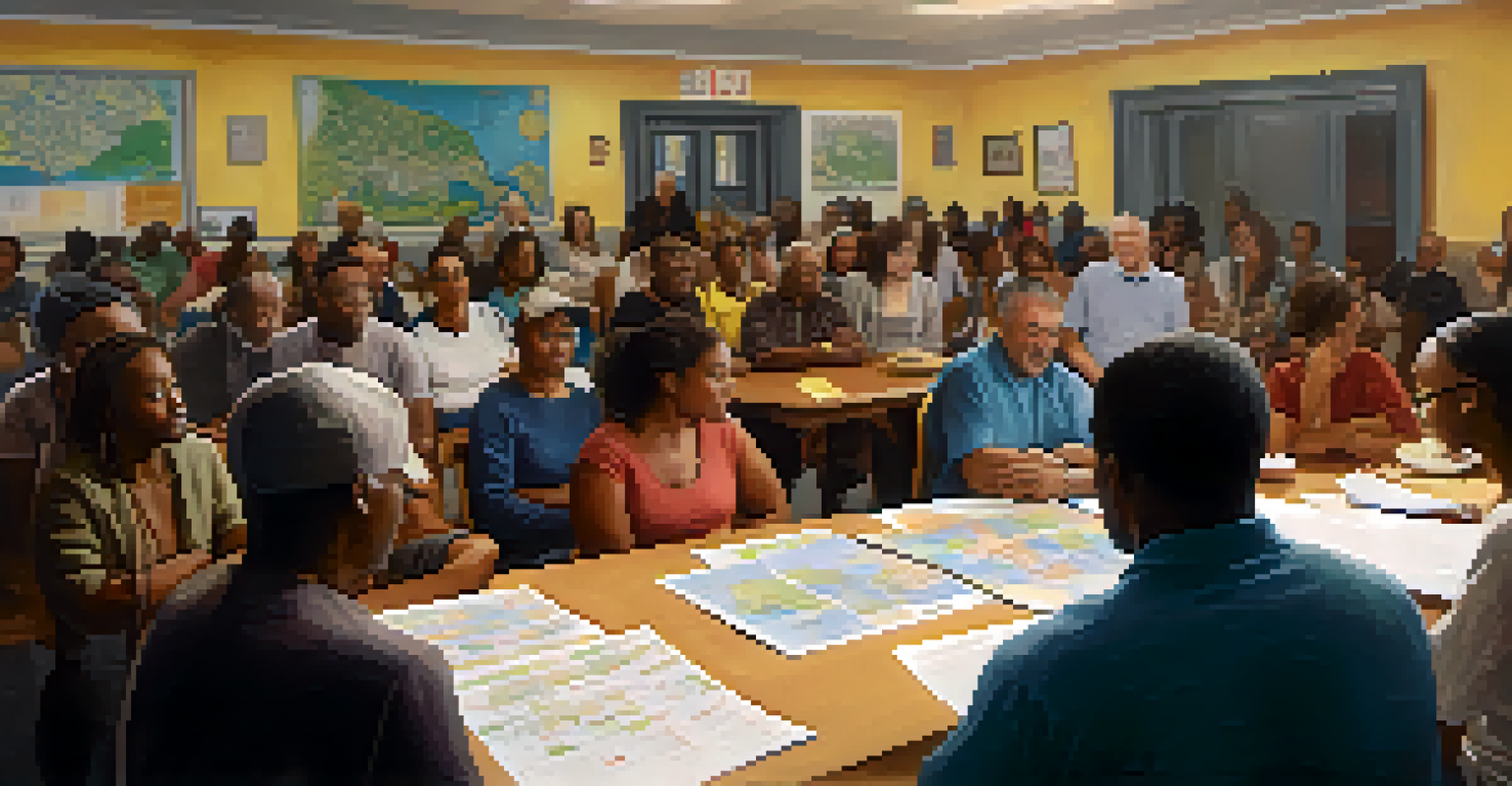Understanding the Affordable Housing Crisis in New York City

Overview of the Affordable Housing Crisis in NYC
New York City, known for its iconic skyline and vibrant culture, faces a pressing affordable housing crisis. With skyrocketing rents and limited housing stock, many residents struggle to find homes within their budget. This issue affects not just low-income families, but also middle-class workers who are getting squeezed out of their neighborhoods.
Housing is a human right, not a privilege.
In recent years, the demand for housing has outpaced supply, leading to fierce competition for available units. According to various reports, nearly half of NYC renters are paying more than 30% of their income on housing, a clear indicator of financial strain. This situation is particularly dire in neighborhoods that were once considered affordable.
Understanding this crisis requires us to delve into the factors contributing to the high cost of living in the city. From gentrification to zoning laws, several elements play a role in the current housing landscape, making it essential for residents and policymakers alike to address these challenges head-on.
The Role of Gentrification in Housing Costs
Gentrification is a significant factor in the affordability crisis, transforming once-affordable neighborhoods into high-demand areas. As wealthier individuals move in, property values and rents rise, displacing long-time residents who can no longer afford to live there. This process can lead to a loss of community and cultural identity in neighborhoods that were historically diverse and vibrant.

Take, for example, neighborhoods like Williamsburg and Bushwick in Brooklyn. These areas have seen a dramatic influx of new residents, driving rents up and pricing out many local families. While gentrification can bring investment and development, it often does so at the expense of those who have lived in these communities for generations.
Gentrification Displaces Residents
As wealthier individuals move into once-affordable neighborhoods, long-time residents are being priced out, threatening community identity.
The challenge lies in balancing the benefits of development with the need to preserve affordable housing. Community leaders and activists are advocating for policies that protect existing residents while still allowing for growth, but finding a middle ground is no easy feat.
Zoning Laws and Their Impact on Housing Supply
Zoning laws dictate how land can be used and significantly influence the availability of affordable housing. In NYC, strict zoning regulations often limit the construction of new residential buildings, particularly in areas where housing is most needed. This creates a bottleneck effect, where demand continues to rise, but supply remains stagnant.
Affordable housing is a critical issue that affects not only the quality of life for individuals and families but also the overall health of communities.
For instance, if a neighborhood is zoned primarily for commercial use, it can limit the opportunity for residential developments that could accommodate more families. This lack of flexibility in zoning can exacerbate the housing crisis, making it difficult for city planners to respond to changing demographics and needs.
Efforts to reform zoning laws have been met with both support and resistance. Advocates argue for more inclusive zoning practices that encourage affordable housing development, while opponents often fear that such changes could alter the character of their neighborhoods.
The Effects of the COVID-19 Pandemic on Housing
The COVID-19 pandemic has had a profound impact on the housing landscape in New York City. Initially, the city saw a temporary dip in rental prices as many residents fled to suburban areas, leading to a brief sense of relief for renters. However, as the economy has begun to recover, rental prices have surged again, putting additional strain on those already struggling to make ends meet.
Moreover, the pandemic has highlighted the vulnerabilities of low-income families, many of whom faced job losses and uncertainty about their housing stability. Eviction moratoriums provided some relief, but as these protections have ended, many individuals are at risk of losing their homes.
Zoning Laws Limit Housing Supply
Strict zoning regulations in NYC restrict the construction of new residential buildings, exacerbating the affordable housing crisis.
The ongoing recovery efforts must address these disparities to ensure that affordable housing remains accessible. It’s crucial to implement policies that support renters and prevent a wave of evictions that could further deepen the housing crisis.
The Importance of Rent Control and Stabilization
Rent control and rent stabilization are critical tools in the fight against the affordable housing crisis in NYC. These policies help keep housing costs manageable for long-term residents, ensuring that they can remain in their homes despite rising market rates. However, the effectiveness and reach of these policies have been hotly debated over the years.
Critics argue that rent control can discourage landlords from maintaining their properties, leading to a decline in housing quality. On the other hand, supporters believe that without such protections, many families would be forced out of their homes, exacerbating the crisis.
Ultimately, finding a balance is essential. Policymakers must consider innovative solutions that protect tenants while encouraging responsible property management, ensuring that affordable housing remains a viable option for all New Yorkers.
Community Initiatives Tackling the Crisis
Across New York City, community organizations and grassroots initiatives are stepping up to address the affordable housing crisis. These groups often work directly with residents, advocating for their needs and pushing for policy changes that can lead to more accessible housing options. From organizing tenant unions to providing legal assistance, these efforts are vital in empowering individuals.
One notable example is the rise of community land trusts, which aim to acquire land and maintain it for affordable housing. By removing properties from the speculative market, these trusts help ensure that housing remains affordable for generations to come, reinforcing community stability.
COVID-19 Amplifies Housing Vulnerabilities
The pandemic has intensified housing challenges for low-income families, highlighting the need for policies that support renters and prevent evictions.
Such initiatives demonstrate that while the challenges are daunting, collective action can lead to meaningful change. By fostering community engagement and advocating for policy reform, these grassroots movements are making strides in the fight for affordable housing.
Looking Ahead: Solutions for Affordable Housing
As the affordable housing crisis continues to evolve, it’s critical to explore innovative solutions that address the root causes of the issue. Policymakers, developers, and community advocates must collaborate to create a comprehensive approach that prioritizes affordability while also accommodating growth. This could involve revising zoning laws, increasing funding for affordable housing projects, and supporting tenant protections.
Additionally, leveraging technology and data can provide insights into housing trends and needs, helping to inform effective strategies. For example, utilizing data analytics to identify underutilized properties could lead to targeted redevelopment efforts that benefit the community.

Ultimately, the goal is to create a city where everyone, regardless of income, has access to safe and affordable housing. By fostering collaboration and embracing innovative solutions, New York City can work towards a more equitable future for all its residents.